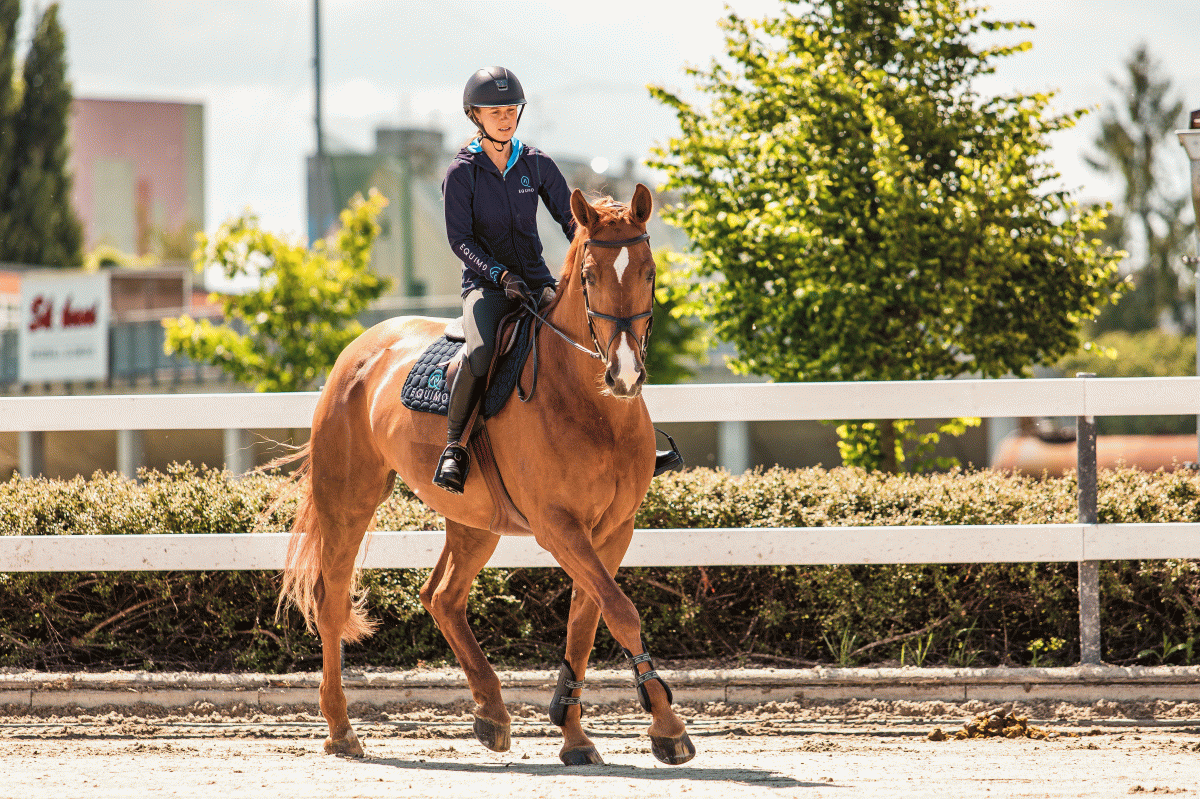
Flatwork is an essential part of every equestrian's schedule; it provides the foundation for every discipline. Nonetheless, we have probably all been there where flatwork becomes ordinary and uninteresting. If you are experiencing this spiritless stage or just looking for new ways to make your riding sessions interesting, let this article be your help!
1) Set a goal
Think beforehand. What do you need to work on? What does your training schedule look like these days? How hard should this session be? These are all questions to consider to avoid riding without a goal. Of course, merely stretching your horse may be of use, but it is always better to ride with a goal you can aim to.
2) Implement lateral movements
Lateral movements are a must for dressage riders and eventers, but most of the showjumpers also practice them. Exercises such as a shoulder-in or leg-yield improve your horse's balance and flexibility, and your horse is learning to react to your riding aids better.
3) Use poles
If you want to perk things up, place poles into the arena. There are endless possibilities of pole exercises, but you can also take the poles and put them anywhere you like without any profound thought or precise order. You and your horse will have fun figuring all the ways to ride them, and you will learn a great deal!
4) Go out into fields
If the weather is friendly, take your horse out to the fields or meadows.There, you can ride and do as much work as in the arena, but in a different environment. Moving on a bit of uneven terrain improves joints and ligaments' function, but it needs not to be overdone, of course.
5) Ride bareback if you dare
Riding bareback is a great way to connect more with the horse and improve your balance and position. Because there is no layer between you and the horse while riding bareback, every move of a muscle counts. Therefore you may discover the core of some issues you have. For example, if your horse stops during a lead change and the change is not as smooth as it should be, the reason may be that you squeeze your thighs too much. Or if your horse seems to be a bit crooked on one side, it may originate from your tight muscles or back. Plus, you see your relaxation level – if you are a relaxed rider, the horse will probably relax quickly. If you are tense, the more you will see your tension translated into your horse's posture and behavior. See yourself. While riding bareback can be extremely helpful, it is also big fun – just don't forget to wear your helmet!
6) Transitions
Transitions can make a lazy horse more interested, and a fresh horse more perceptive. If you want to do more transitions during a session, let's play a game. Imagine you are the trainer of yourself, and you want to give yourself a hard time. The goal is to come up with a transition after transition without much thinking. So, for example, you think "canter," and after several strides, think "trot." Once you're trotting, think "halt" and follow your thoughts. These changes may happen as fast as you need, and with this "immediate thought" approach, you avoid overthinking decisions and exercises.
7) Get inspired
If you run out of ideas and feel like you could use a motivation, watch your favorite riders' videos (there are plenty of them online). Analyze those videos and then implement the things you learn on your improvement. If you try, you will find some interesting details!
Have fun!